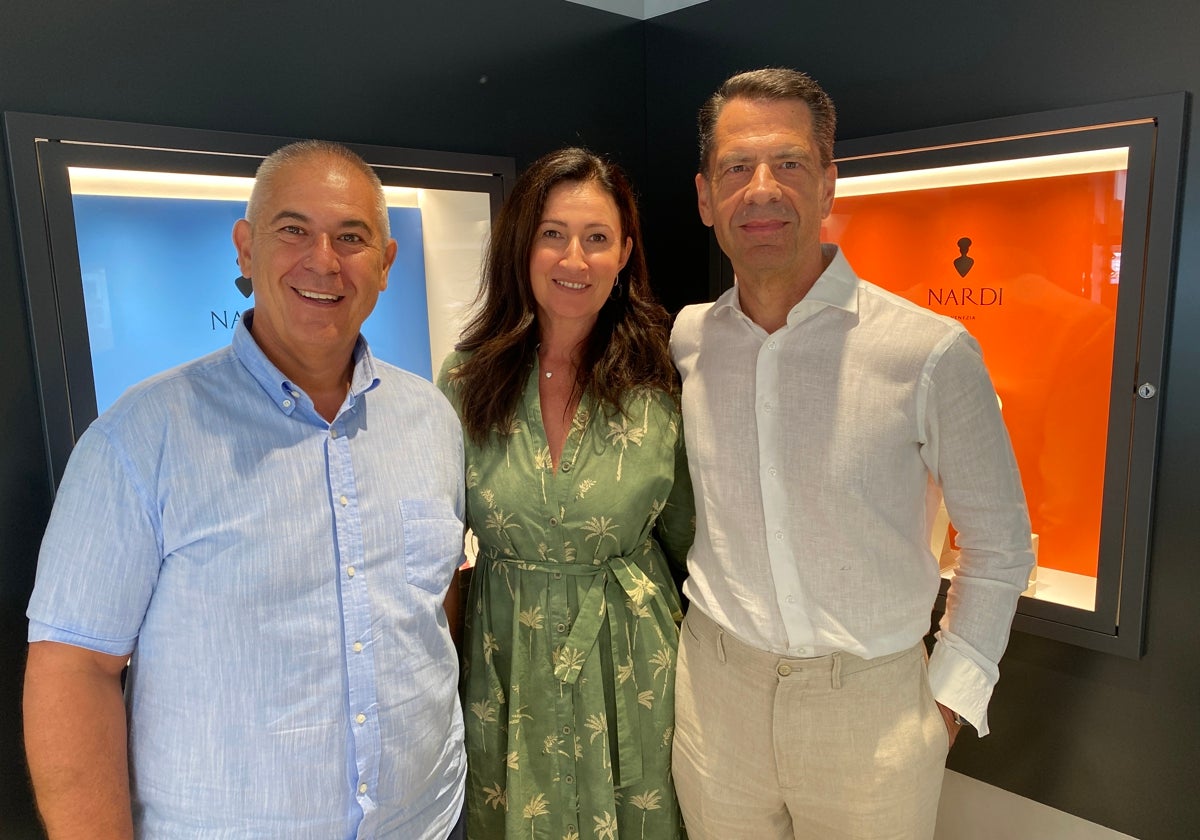The jewels that charmed Grace Kelly and Marilyn Monroe arrive in Marbella
An exhibition of the exclusive Venetian jewellery brand Nardi features more than 100 iconic pieces. SUR speaks with its owner Alberto Nardi
Alberto Nardi is the third generation, after his grandfather Giulio and his father Sergio, to manage the exclusive Venetian jewellery brand Nardi. The company is almost a century old and very famous in the Italian Dolce Vita era thanks to the fact that some of its pieces were cult objects and collections of actresses and royal houses. An exhibition of their most emblematic works is on show at the Gómez y Molina jewellery shop in Marbella until 17 August, an exhibition that opens the cultural cycle of the history of contemporary jewellery.
How did Nardi start?
Nardi is a family story. My grandfather Giulio, who was Florentine, fought in the First World War near Venice. He fell in love with my grandmother who was Venetian. They married on the condition that he went to live there and he opened a jewellery business that he perfected over time, characterised by the design of his own exclusive handcrafted pieces linked to the beauty and history of the city of Venice.
Nardi is world famous and one of its most epic moments coincides with the time of the Italian Dolce Vita.
That's right. People who came to Venice for holidays began to know us and in those golden years in Italy, when tourism of the highest European and American level was arriving, Nardi became popular among the aristocracy, actresses and European royal houses. Grace Kelly, Marilyn Monroe, Joe DiMaggio, Elizabeth Taylor, the Spanish Infantas...
Also, people like Jean Cocteau, who has lived in Marbella; or the writer Ernest Hemingway, with a strong link to Spain, who talks in his book Across the River and into the Trees about one of the most famous Nardi pieces, the Moretto. Today we already have the third or fourth generation of American customers who consider us their jewellers.
Tell us more about the Moretto, are they your most emblematic pieces?
They are among them. It is true that they became very popular, as I have said, thanks to the fact that great aristocratic, cultural and royal personages wore them. I like to talk about them as part of Venice and of our philosophy of highlighting the beauty and art of my city, of the historical link between Venice and oriental culture, with the Silk Road... The Moretto are talismans, fortune bearers and their meaning goes beyond the gold and stones that make them up: they are jewels that are attached to the history of Venice and, in this case, to my grandfather, Giulio, who was the one who created the first Moretto in Nardi.
How would you rate Nardi's current style?
Nardi's century of history tells us that its jewellery is a symbol of elegance and exclusive style. I have revived the philosophy with which my grandfather Giulio started this business at the end of the 1920s, which was to create jewellery that moves and tells a story, working each piece by hand, always with a desire to learn and always with a great love for my city, a beautiful city, very delicate and very badly treated. When I travel around the world, like now to Marbella, I am very touched by the people who love my city, because my jewellery is a testimony to the beauty of a city that must continue beyond mass tourism.
Was it difficult to set up this exhibition in Marbella?
A year and a half of work. Miguel Gómez Molina and I have many things in common - a passion for detail, beauty, for what is handmade with love and the ability to make jewellery as it was made 2000 years ago. The pieces in this exhibition are a continuous nod to the culture and protection of a city that is known all over the world, and I share Miguel's idea of offering something more than a retail business.
Is this the first time that Nardi pieces have been exhibited in Spain?
Indeed. We have participated in Madrid and Barcelona in purely commercial events, but this is the first time that we are exhibiting in Spain, in Marbella, from an educational, didactic and cultural perspective, an exhibition open to the public. For us, Spain is a very important country and we have never done such an exhibition with more than 100 pieces of our jewellery. It is to Miguel Gómez Molina's credit that we are here in Marbella today.
What's left for Alberto Nardi to do?
I want to continue to transmit this passion for Venice and respect for its heritage and culture to young people and, in my travels, to be an ambassador of a Venice that wants to endure - a city that is part of the world’s history, and where we aim to do things well, with constant aesthetic research at Nardi.


Comentar es una ventaja exclusiva para registrados
¿Ya eres registrado?
Inicia sesiónNecesitas ser suscriptor para poder responder.
Necesitas ser suscriptor para poder votar.